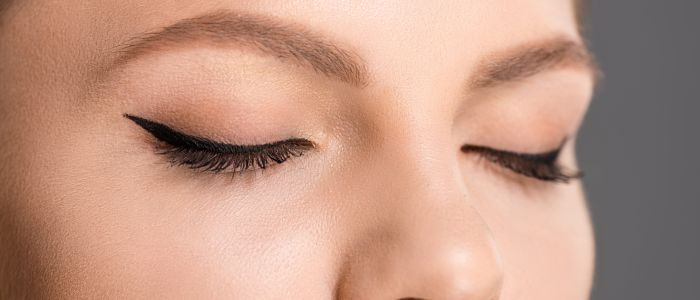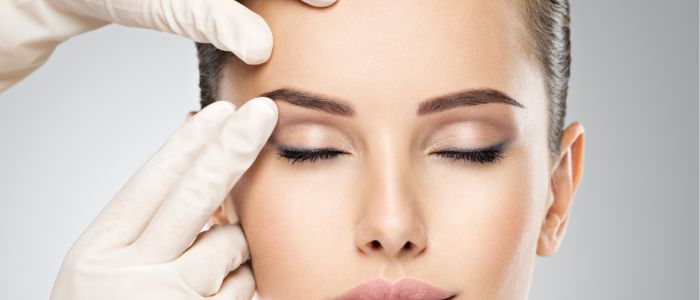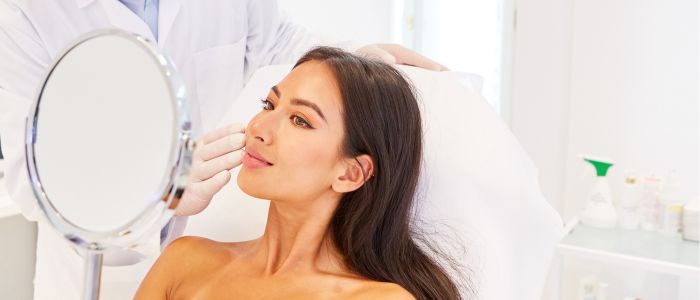
Table of Contents
- Potential Complications after Eyelid Surgery and How to Prevent or Treat Them
- What Is Eyelid Surgery?
- Reasons for Getting Eyelid Surgery
- Common Complications of Eyelid Surgery
- Bruising and Swelling
- Infection
- Dry Eyes
- Scarring
- Asymmetry
- Preventive Measures to Avoid Blepharoplasty Complications
- Pre-surgery Steps to Minimise Risks
- Post-surgery Care Tips to Reduce Blepharoplasty Complications
- Treatment Options for Blepharoplasty Complications
- When to Contact Anca or Seek Medical Attention
- FAQs about Blepharoplasty Complications
- Further Reading about Blepharoplasty with Consultant Plastic Surgeon Anca Breahna
Potential Complications after Eyelid Surgery and How to Prevent or Treat Them
Eyelid surgery is a cosmetic procedure that has gained significant popularity for its ability to rejuvenate the area around the eyes, making you look more rested and youthful. While the outcomes can be impressive, enhancing both appearance and vision, it’s important for potential candidates to understand not just the benefits but also the potential complications associated with this surgery. Being well-informed about these risks, how to prevent them, and the available treatments is essential for anyone considering this procedure. In this blog, Chester Consultant Plastic Surgeon Anca Breahna will give you more details about how to avoid blepharoplasty complications.
What Is Eyelid Surgery?
Eyelid surgery is a delicate process designed to remove excess skin, eliminate bags under the eyes, and correct droopiness of the eyelids. The goal is to create a more alert and youthful appearance. This procedure can also improve peripheral vision for those whose eyelids obstruct their sight. Despite its aesthetic and functional benefits, like any surgical procedure, blepharoplasty comes with its set of potential complications.
The surgery is performed on an outpatient basis under local anaesthesia with sedation or general anaesthesia, depending on the complexity and your preference. Anca makes incisions along the natural lines of your eyelids, through which excess fat, skin, and muscle are removed or repositioned. The incisions are then closed with fine sutures, aiming to minimise visible scarring.
Reasons for Getting Eyelid Surgery
Patients opt for eyelid surgery for various reasons, ranging from cosmetic to functional. Some seek to correct the signs of ageing around their eyes, while others aim to improve their vision obstructed by drooping eyelids. Additionally, eyelid surgery can address asymmetry and provide a more refreshed and alert appearance.
It’s important to have a clear and realistic understanding of what eyelid surgery can achieve. While it can significantly improve the appearance of the eyes and, by extension, the overall facial aesthetic, it’s not a panacea for all ageing signs or unrelated cosmetic concerns. A thorough consultation with a qualified plastic surgeon such as Consultant Plastic Surgeon Anca Breahna can help set realistic expectations, ensuring that the outcome aligns with your goals.
Common Complications of Eyelid Surgery
Despite the high success rate of eyelid surgery, as with any surgical procedure, there are potential risks and complications. Awareness and understanding of these issues are crucial for anyone considering this procedure. Here are some complications that could occur after undergoing the procedure:
Bruising and Swelling
Bruising and swelling are the most common post-operative complications, usually peaking within the first week after surgery. While these symptoms are a normal part of the healing process, their severity can vary. Applying cold compresses and keeping the head elevated can help minimise swelling. Most swelling and bruising subside within two weeks, revealing the surgery’s results.
Infection
Though rare, infection is a potential risk after eyelid surgery. Signs of infection include increased pain, redness, and discharge from the incision sites. Preventive measures include following Anca’s post-operative care instructions meticulously, which may involve the use of antibiotic ointments or oral antibiotics.
Dry Eyes
Some patients may experience dry eyes following eyelid surgery, which can result from temporary changes in eyelid function and sensation. Lubricating eye drops and ointments can alleviate these symptoms, which usually resolve as the healing process progresses.
Scarring
Scarring is an inherent aspect of any surgical procedure. However, in the case of eyelid surgery, incisions are strategically placed in the natural creases of the eyelids or inside the lower eyelid to minimise visible scarring. Following post-operative care instructions and attending follow-up appointments are crucial for optimal scar healing.
Asymmetry
Post-operative asymmetry may occur due to differences in the healing process or pre-existing asymmetry that wasn’t fully corrected. While minor asymmetries often resolve as swelling decreases, significant concerns can be addressed with revision surgery.
Preventive Measures to Avoid Blepharoplasty Complications
Pre-surgery Steps to Minimise Risks
The journey to a successful eyelid surgery begins long before the actual procedure. Taking proactive steps can significantly minimise the risk of complications.
- Choosing a Qualified Surgeon: The importance of selecting an experienced plastic surgeon who specialises in eyelid surgeries cannot be overstated. A qualified surgeon not only brings a wealth of experience but also a deep understanding of the anatomy of the eye, ensuring both the safety and the efficacy of the procedure. Researching potential surgeons, reviewing their before-and-after photos, and checking their credentials and patient reviews are important steps.
- Discussing Medical History: A thorough discussion of your medical history with Anca is vital. This includes any previous eye conditions, surgeries, allergies, and medications you’re taking. Certain conditions, such as dry eye syndrome, thyroid eye diseases, or diabetes, can affect your surgery outcome and risk profile. Being upfront and honest with Anca allows her to tailor the surgery to your specific needs and possibly take extra precautions.
- Pre-operative Assessment: Undergoing a comprehensive eye examination and possibly consulting with an ophthalmologist can provide a clearer picture of your eye health. This step is important for identifying any underlying conditions that could complicate the surgery or recovery process.
Post-surgery Care Tips to Reduce Blepharoplasty Complications
Here are some considerations for a smooth recovery and to minimise the risk of complications:
- Follow Aftercare Instructions: Anca will provide detailed aftercare instructions, which may include how to care for your eyes, medications to take to aid healing and reduce the risk of infection, and when to return for follow-up visits. These instructions are tailored to your specific situation and must be followed closely.
- Attend Follow-Up Appointments: Post-operative appointments allow Anca to monitor your healing process and catch any potential complications early. These visits are crucial for ensuring that your recovery is on track and addressing any concerns you may have.
- Eye Care: Proper eye care, including cleaning your eyelids gently and using prescribed eye drops or ointments, is essential. Avoid rubbing your eyes or wearing contact lenses until Anca gives you the go-ahead.
- Protect Your Eyes: Wearing sunglasses to protect your eyes from the sun and wind is recommended. This protection helps prevent irritation and ensures a more comfortable healing process.
- Rest and Recovery: Giving your body the time it needs to heal is important. Ensure you get plenty of rest, avoid strenuous activities, and keep your head elevated to reduce swelling.
Treatment Options for Blepharoplasty Complications
Despite taking all preventive measures, complications can still occur. Knowing how to recognise these complications and the available treatment options is essential:
- Medications for Infection: If an infection is suspected, Anca may prescribe antibiotic eye drops or oral antibiotics. Start these medications as soon as possible to prevent the spread of the infection.
- Corrective Surgery for Asymmetry: In cases where asymmetry is significant and does not resolve on its own, corrective surgery might be necessary. This decision is typically made several months after the initial surgery, allowing time for complete healing and swelling to subside.
- Treatment for Dry Eyes: For patients experiencing dry eyes, lubricating eye drops or ointments are often prescribed. In more severe cases, temporary or permanent tear duct plugs may be recommended.
- Managing Bruising and Swelling: While bruising and swelling are normal parts of the healing process, treatments such as cold compresses, gentle massage, and certain medications can alleviate these symptoms.
- Scar Management: Scars improve over time but can be managed with silicone gel sheets, scar creams, and, in some cases, laser treatments to improve their appearance.
When to Contact Anca or Seek Medical Attention
Here are some signs that you might need medical attention:
- Increased Pain or Discomfort: While some pain is expected, a sudden increase in pain could indicate an infection or other complications.
- Signs of Infection: Redness, swelling, warmth, or discharge at the incision sites are signs of infection that require immediate attention.
- Vision Changes: Any sudden changes in vision post-surgery should be addressed immediately, as they could indicate a more serious issue.
- Unusual Symptoms: Any symptoms that deviate significantly from the expected recovery process, such as severe swelling or bruising, should prompt a call to Anca.
FAQs about Blepharoplasty Complications

Can blepharoplasty lead to changes in eye shape?
Yes, in some cases, patients may notice a change in the shape of their eyes after blepharoplasty. This can occur due to the removal of too much skin or improper healing, leading to an altered eyelid contour. However, experienced surgeons take careful measures to preserve the natural eye shape, and any significant changes are rare. If changes in eye shape do occur, they can often be corrected with revision surgery.
How long does it typically take for vision to normalise after eyelid surgery?
It’s common for patients to experience blurry vision for a few days to a week following eyelid surgery, primarily due to swelling, the use of ointments, and temporary changes in the eye’s surface. Vision usually begins to clear up as the swelling decreases and the eye heals, usually within a week or two. However, if blurred vision persists beyond this period, it’s important to consult with Anca or an ophthalmologist.
Is it normal to experience numbness around the eyes after blepharoplasty?
Yes, it’s normal to experience some degree of numbness or reduced sensation around the incision sites after eyelid surgery. This occurs because the surgical process can temporarily affect the sensory nerves in the skin. In most cases, this numbness is temporary and sensation gradually returns over weeks to months as the nerves recover.
Can blepharoplasty affect my ability to close my eyes?
In rare cases, patients may experience difficulty fully closing their eyes after blepharoplasty, a condition known as lagophthalmos. This usually occurs when too much skin has been removed from the upper eyelids. Most instances of lagophthalmos are temporary and improve as the healing process progresses. However, persistent cases may require medical attention or corrective procedures to ensure proper eye closure and protection.
What should I do if I notice a lump or bump on my eyelid after surgery?
It’s not uncommon for patients to notice small lumps or bumps on their eyelids as they heal from blepharoplasty. These can be caused by several factors, including sutures, localised swelling, or scar tissue formation. In many cases, these lumps are temporary and resolve on their own as the healing process continues. Gentle massage (if approved by Anca) can help expedite their resolution. However, if a lump persists or is accompanied by pain or other symptoms, it’s important to consult Anca for evaluation and possible treatment.
Medical References about Blepharoplasty Complications
- Complications of Blepharoplasty: Prevention and Management
- Blepharoplasty in aesthetic facial surgery
- Blepharoplasty – Mayo Clinic
- Eyelid Surgery Risks and Safety – American Society of Plastic Surgeons
- Complications of Blepharoplasty: Prevention and Management
Further Reading about Blepharoplasty with Consultant Plastic Surgeon Anca Breahna
- Read more about What Are Hooded Eyelids?
- Read more about Solutions for Saggy Eyelids
- Read more about When Can I Exercise after Eyelid Surgery
- Read more about Recovery after Eyelid Surgery
- Read more about How to Reduce Swelling and Bruising after Blepharoplasty Surgery
- Read more about Beginners Guide to Eyelid Surgery
- Read more about What Can Be Done to Reduce Eyelid Surgery Scars?
- Read more about Eyelid Surgery in Your 30s, 40s, 50s And 60s
- Read more about Treatment and Solutions for Droopy Eyelids
- Read more about Can Eye Bags Go Away?
- Read more about Eyelid Surgery FAQs








